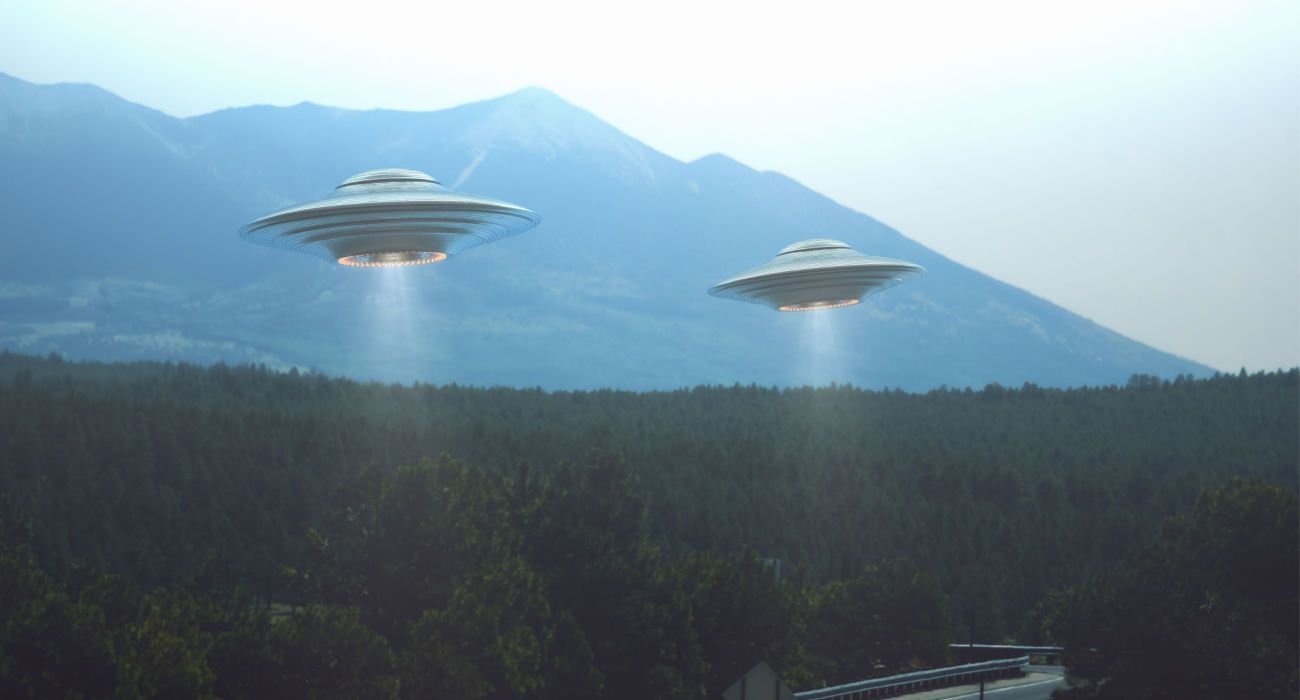Quick Links
UFOs are real (after all, not all flying objects are identified all of the time). Go into Canada, and one will see irrefutable evidence they exist - in the form of a UFO landing pad. The landing pad is located in the small town of St. Paul in a remote region of the Canadian province of Alberta.
Since WW2, there has been no shortage of reported UFO sightings - including many recent sightings. While it can seem from movies at times that UFOs only visit the deserts of Nevada and the forests of Oregon, UFO sightings have been reported all around the world. Believe it or not, but not all UFO landings are in the United States (particularly in the West); some prefer to visit America's friendly northern neighbor.
St. Paul's UFO - The World First UFO Landing Pad
"The area under the World's First UFO Landing Pad was designated international by the Town of St. Paul as a symbol of our faith that mankind will maintain the outer universe free from national wars and strife. That future travel in space will be safe for all intergalactic beings, all visitors from earth or otherwise are welcome to this territory and to the Town of St. Paul."
Sign By The Landing Pad
St. Paul's UFO landing pad was built in 1967 (as part of the Canadian Centennial celebrations) and was the first in the world. St. Paul's was declared the Centennial Capital of Canada. The hope was to attract tourists and Martians to the far-flung community. There are no indications any Martians have visited the community yet.
The landing pad may not have attracted anyone from outer space; but it has attracted the Canadian Minister of National Defence. The Minister of National Defence at the time, Paul Hellyer, flew in by helicopter and officially opened the Pad.
- Built: 1967
- Occasion: Canadian Centennial Celebrations
The landing pad is a 30-tonne raised platform. The backstop of the platform is a map of Canada that is made up of stones provided by each of the Canadian provinces.
The landing pad is a symbol of unity. It signals all are welcome (including aliens, apparently - unless they come with the Fourth Of July movie-style intentions to annihilate humanity). It's not exactly clear if aliens are expected to go through Canadian immigration and customs or not.
Visit The UFO Visitor Center In St. Paul
There is also a small visitor information center for people to explore near the UFO exhibit. It was opened in the 1990s and has a UFO exhibit downstairs. The exhibit has been designed with an eye to education.
Visitors can learn all about the mysterious sightings of UFOs, including "actual" photos of UFOs, crop circles, and cattle mutilations.
The Tourist Information Centre is open seasonally. It is open from the May Long Weekend to the September Long Weekend.
- Season: May to September
- Days Open: Tuesday to Sunday (Closed Mondays)
- Opening Hours: 10.00 am to 6.00 pm
- Phone: 780-645-6800
- Email: infotourist@town.stpaul.ab.ca
While in St. Paul, see their boutique shops that represent over 50 local artisans. Plan one's stay in St. Paul on the town's official website.
History Of Alberta's Far-Flung Town Of St. Paul
The tiny town of St. Paul is pretty far from anywhere, but its claim to fame is its world-first UFO Landing Pad. St. Paul was founded as a Metis colony in 1896 (the Metis are indigenous peoples who live in the Canadian prairies with mixed European - mostly French - ancestry).
St. Paul was originally founded as Saint-Paul-des-Métis, but the Metis colony failed. It was later opened up to European colonists, and hundreds of colonists (including French Catholic colonists) moved in.
- Population: 5,900
Today St. Paul has a population of around 6,000.
St. Paul is a small prairie town without a lot of attractions. So while the world's first UFO landing pad may be a great side trip for anyone passing through that part of Alberta, it is not really worth a trip of its own.
There are a few other attractions in St. Paul; these are the town's local cultural facilities, like the St. Paul Visual Arts Centre, the St. Paul Historic Museum, and the Mannawanis Friendship Centre. Anyone wanting to stretch their legs can hike Alberta's Iron Horse Trail. It is the longest completed section of the trans-Canada Trail in Alberta.

